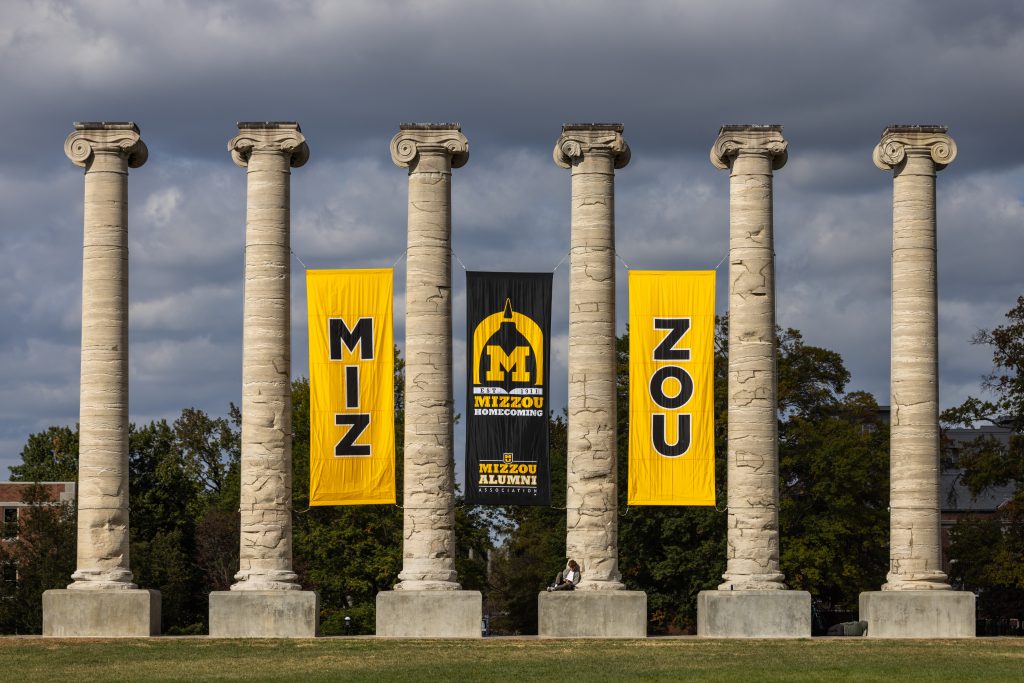Published on Oct. 26, 2023

What can we learn about the history of our planet from Mizzou’s most recognizable landmark, our columns? More importantly, how can we pass on our knowledge of ecological history to the next generation in a way that piques their interest?
Geological Sciences Associate Professors Dr. John Huntley and Dr. Jim Schiffbauer were the first dual awardees of the NSF CAREER Award in the Sedimentary Geology and Paleobiology Program from the same department during the same year (2017). Their work helps us understand how different ecosystems have responded to climate change over millennia.
While much of this work is conducted in coastal settings in Europe and China, Dr. Huntley decided to bring it closer to home in a way that would be directly relevant to Missourians. He developed a curriculum called “Geology of the MU Columns,” which utilizes the most recognizable landmark on the University of Missouri campus to explore the basic principles of deep time, climate change, biological evolution, and plate tectonics. The Columns, constructed from central Missouri limestone, which was deposited in a shallow tropical sea approximately 350 million years ago, are the traditional symbol of the University and a destination for Mizzou fans. “Geology of the MU Columns” is taught as a one-hour credit undergraduate themescourse during a five-week session in regular academic semesters. The goal is to improve overall scientific literacy in a way that is unique to MU.
Dr. Schiffbauer’s expertise is in the earliest fossil record of animals, and he serves as the vice chair of the Subcommission of the Ediacaran Period for the International Commission on Stratigraphy. One of the foremost goals of this scientific body is to define and curate the International Chronostratigraphic Chart, the basis of the geologic time scale. How do we take this work and make it appealing to our students, and our community? Thanks to his work we will soon install a geologic time-mural (part of his NSF CAREER award), along with a course specifically dedicated to understanding how geologic time is kept, organized, and measured. The mural, with artwork by Stacy Turpin Cheavens (a certified medical illustrator with the School of Medicine), is scheduled to be installed in the Geological Sciences Building in Fall 2023. This piece will illustrate 13 geologic time periods to scale (with 1 foot width being equivalent to 20 million years), ranging from today through 635 million years ago at the start of the Ediacaran Period. It incorporates important events in the history of the earth and life, including major mountain building events, extinctions, and transitional phases in ecological and evolutionary history. This mural will have a digitally interactive portion as well, which viewers will be able to access through QR codes positioned with each of the Periods.
When we work on peer reviewed and grant funded research while also connecting this work to our students and community, we stay true to our trifecta mission of research, teaching and service to the community. Our research matters – the work we do makes a difference.